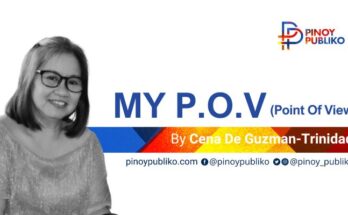THE number of countries that have lifted or relaxed their prohibition on cannabis have increased steadily just in the last five years. Which begs the question: What is so special about this plant that is prompting nations to change their laws and has leaders rethinking their stance on drug-related crimes? Why is history suddenly being rewritten on account of a plant that has been misunderstood, misclassified in drug schedules and demonized for decades?
Cannabis legalization and drug reforms are happening globally as more and more studies show that cannabis is not a dangerous drug but an effective alternative treatment for different ailments. The trend shows there is more to lose with prohibition than any unintended consequences of legalization.
Truth is, cannabis products are already in our streets and can be purchased in the black market. Cannabis plants can be cultivated like houseplants and can be dried and rolled into blunts or manufactured into edibles, oils and concentrates with no special equipment. However, none of these do-it-yourself methods are safe. Not to mention the risk of imprisonment if caught.
But sadly, it is the only practical option for patients desperate to find a cure. For a parent of a sick child, a fire hazard from a DIY method, or obtaining from an illegal source are worth the risk. Unless, of course, they hold a Compassionate Special Permit for using cannabis to treat a medical condition and can afford to import the meds from abroad.
Granted, legalization may not necessarily or immediately eradicate the black market. But it gives patients two distinct options: under the table or through legal means. I believe that most patients will go for the latter.
Senate Bill 230 (Padilla) and House Bill 241 (Albano) both propose to create a regulatory system for qualified patients to have safe and legal access to cannabis, which will be dispensed in designated hospitals around the country. Plants will be grown locally and manufactured into pills by the pharmaceutical industry. Not exactly what I would consider the best model, but nevertheless, access to a cure without the risk of committing a crime is still a win for patients.
I cannot overemphasize the interest of patients here because in the midst of the ugly debacle and political grandstanding, they get lost in the shuffle. It’s time their interests are given a higher priority in this debate over the paranoia and recycled rhetoric on drug addiction and violent behavior. Research supports that cannabis has a lower risk for abuse than nicotine and alcohol, and that even the most potent cannabis is less harmful than alcohol.
If the lack of a domestic study on the medicinal value of cannabis is hindering legalization, then why not commission a study now? A study will kill two birds with one stone.
First, it would confirm findings on the therapeutic effects of the cannabis plant. Second it would satisfy the required assessment of the drug stated in Dangerous Drug Board (DDB)’s regulations as the initial step for reclassifying, adding or removing any drug on the Philippine Schedule of Dangerous Drugs. Cannabis advocates contend that cannabidiol (CBD), the medicinal component of the cannabis plant, does not belong in that list at all, and its psychoactive component Tetrahydrocannabidiol (THC), is more appropriate for Schedule 4 than Schedule 1.
It is difficult to imagine how results from a domestic study could possibly be any different from those already conducted by scientists around the globe. If anything, it would only solidify any anecdotal information that prohibitionists dismiss as inaccurate data or unreliable tales. There is a voluminous amount of credible data from nations with far more advanced technologies and way competent research capacities.
Many of the states in the US also struggled with this. With cannabis still illegal at the Federal level, FDA research was impossible. But did it stop the individual states from legalizing medicinal cannabis? On the contrary, nearly four million patients in the US now use cannabis in various forms to treat a host of ailments. With the exception of Epidiolex, a drug containing cannabidiol (CBD) approved by the FDA for epileptic seizures, none of the cannabis-based medications and products currently sold in the US are FDA-approved.
In the Netherlands, pharmacies are legally required to stock cannabis meds. In Germany, Colombia and the Czech Republic, cannabis meds are covered by health insurance. Cannabis is considered as medicine in these countries and in dozens more, so there’s got to be a copious amount of research supporting the rationale for these policies that we can utilize. Using available information from credible sources to make an informed decision, in this case, is not only acceptable, but necessary.
And doing so doesn’t suggest that FDA approval is not important. Or that insurance providers must cover cannabis meds. By all means, we can take the same logical approach by those countries who changed their laws for the benefit of the health and well-being of their citizens: legalize first, then regulate by establishing fair and sensible regulations that fit our needs.
Regulation is the key to achieving the perfect balance between prohibition and legalization. Let’s be blunt about it: cannabis is not a dangerous drug. Prohibiting it would only push it deeper into the underground market and make criminals out of patients. Legalization is not a golden ticket or an all-access pass. Alcohol and tobacco regulations prove that legal doesn’t necessarily mean they can be purchased by just anyone.
Sure, diversion is a legitimate concern that deserves a conversation all its own. But let’s put that on a separate track. For now, let’s just focus on the medicinal use and create a realistic path for patients who have been waiting long enough. For someone suffering in pain or in dire need of a cure, every minute counts.
About the author: Zarah Uytingban Cruz is a Program Specialist for the City of Sacramento Office of Cannabis Management and specializes in policy development and licensing regulations since 2017. She has over 20 years of State (of California) and local government experience in areas of public policy, inter-government relations and communications. She can be reached by email at [email protected]. (Note: the views expressed in this piece are purely the author’s and do not represent the position of the City of Sacramento and Pinoy Publiko on the topic.)
Para sa reaksyon o komento at tanong mag-email sa [email protected]





